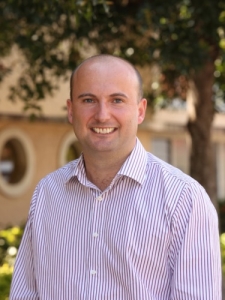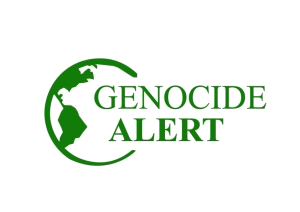Interview mit Alex Bellamy: „Structural atrocity prevention is about reducing atrocity risks and building resilience“

Alexander Bellamy
Alexander Bellamy is Director of the Asia Pacific Centre for the Responsibility to Protect and Professor of Peace and Conflict Studies at The University of Queensland, Australia. He is an expert on Human protection, Peacekeeping, and the Responsibility to Protect. His research research and policy consultancy focusses on the prevention of genocide and mass atrocities and human security in the Asia Pacific region. The Asia Pacific Centre for the Responsibility to Protect is engaing with partners across the Asia Pacific-region to protect vulnerable populations and to develop regional expertise on atrocity prevention. The Centre is funded by The University of Queensland and the Australian Government’s Department of Foreign Affairs and Trade.
Genocide Alert has asked Alex Bellamy about his thoughts and recommendations on the nexus of conflict prevention, development cooperation and atrocity prevention.
Is there a difference between “conventional” development cooperation and structural mass atrocity prevention? If there is a difference, what is it?
Alexander Bellamy: The goals are different. Development is focused on achieving economic growth and reducing poverty; structural atrocity prevention is about reducing atrocity risks and building resilience to those risks. Unless development planners are asking specific questions about how their work can support atrocity risk reduction and resilience building there is a good chance the work won’t get done. There is also a chance that development work can exacerbate risks (as happened in Sri Lanka for example) by unintentionally reinforcing other social divides.
In Germany, the concept of mass atrocity prevention lies in the hands of the Foreign Office foremostly. Would it make sense to include mass atrocity prevention as an explicit goal of development cooperation?
Alexander Bellamy: I usually talk about the injection of an ‘atrocity prevention lens’ into development cooperation. This need not require an explicit atrocity prevention in development cooperation – though it would always be useful to have one. Ideally, supporting atrocity prevention would be a whole of government aspiration driven by a government’s commitment to R2P. The point of a lens is to ensure that it is someone’s job to (1) assess risks/resilience in country and sensitize foreign office/development officials to those risks /sources of resilience; (2) examine whether partnerships are contributing to risk reduction/resilience building, and how they might better achieve this; (3) ensure that partnerships do no inadvertently increase risks.
In its guidelines on crises prevention, the German Government declared that the prevention of genocide and other grave human rights violations belongs to the German reason of state. These guidelines explicitely are of cross-ministerial nature. What can a cross-ministerial coopearation in mass atrocity prevention look like in Germany or other states?
Alexander Bellamy: every government is different in terms of how it organises itself and develops cross-ministerial policy. The US established an ‘atrocity prevention board’ comprising officials from relevant departments to share information and analysis. Others simply give their R2P focal point responsibility for coordinating across ministries. Others set up committees. The German government’s commitment goes beyond that of most other governments and creates a strong mandate for establishing some sort of whole of government mechanism. Whether that’s an individual, committee, or board, depends on what people think is the most effective way to get the job done.
Do you know of any concrete cases where development cooperation might have hightened the risk of mass atrocities, for example by increasing tensions between different groups?
Alexander Bellamy: Yes, Sri Lanka prior to 2009 – aid projects in Tamil run areas exacerbated tensions with local Sinhalese and created fears of an internationally backed pseudo state emerging. Another is Myanmar – the inflow of investment and aid in the context of government reform created impetus for land reclamations to allow inward investment. Demand for land in Rakhine state was one of the factors driving ‘clearance’ operations. It has also exacerbated Tatmadaw interest in securing access to timber and other resources in other conflict affected areas. In this context, it was significant that aid and investment did not come with strong human rights conditionality attached to it.
Do you know of any concrete cases where it is plausible to assume that development cooperation prevented onsets of mass atrocities?
Alexander Bellamy: When you’re talking structural risks, there is no direct connection between risk and the onset of atrocities. Societies with high risk can survive decades without ever succumbing to atrocities, for example. So we cannot draw a direct line from structural prevention to avoidance. We can, however, look at places where risk has declined – such as Indonesia, Timor Leste, China itself – examples of countries that have experienced risk but not atrocities, such as Tanzania, Botswana, Zambia – and also examples of countries emerging from atrocities such as Sierra Leone and Liberia – this connection between peacebuilding and atrocity prevention is an important and understudied area.
What role can civil-society actors play in coordinating development cooperation and prevention of mass atrocities?
Alexander Bellamy: of course their role is limited when it comes to government led cooperation, but civil society actors can play a significant role in preventing atrocities. We know for example that where countries have vibrant civil societies they are much better placed to manage moments of tension and address underlying challenges. For example, Syria collapsed in part because there was no effective civil society. Meanwhile civil society in Kenya played a crucial role in preventing election violence in 2013. The key is to understand which civil society actors are playing positive roles in-country and to work with them to see what support can be offered. This can be done directly between civil society actors. For example, we are supporting local NGOs in Timor-Leste, Indonesia, Myanmar, and Bangladesh to do things like community based early warning, counter hate speech, provide women and girls with stronger access to justice etc. There is much more that could be done in this space.
The interview was conducted by Paul Stewens
» Zurück zur Projektseite Prävention von Massenverbrechen und Entwicklungszusammenarbeit
